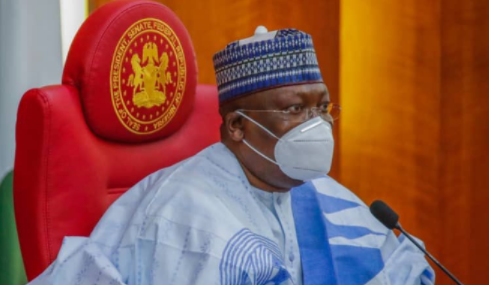BY FRANCA OVADJE
Perhaps nothing better explains the massive unemployment and quality of jobs available in Nigeria or even captures the dread of a worse future than the ratio of pension enrolment to the total labour force. With over 80 million-active labour force, less than 9 million Nigerians are enrolled in the pension scheme. What is more, the gap keeps getting wider especially among the youth working population, which is put at 40 million — just 14.7 million of them are fully employed. The World Bank projects that Nigeria’s labour force will grow by some 66 million able-bodied men and women by 2030 and the country needs at least 2 million jobs annually from 2010 to get them busy.
To achieve this, the government wants to diversify away from oil, the mainstay of the economy. The government is right about diversification as a solution to the country’s unemployment woes but their efforts so far don’t match the enormity of the problem. Oil is only 10% of economic activities but over 90% of exports. Nigeria actually needs to unlock and scale the value chain of other sectors not just for local consumption but to also compete favourably in the export market.
In 2017, the government came up with the Economic Recovery and Growth Plan (ERGP) with highlights of some sectors with growth potential and a strategy to tap into them. More than three years after, newly released unemployment figures by the National Bureau of Statistics (NBS) show that 14 million young people, 14.17% of the labour force, are unemployed and Nigeria is in its second recession in five years. The unemployment rate was 13.96% in 2017 and 7.81% just six years ago.
Advertisement
The massive rate of unemployment in the country observes the federal character; it is spread across the country. The worst performing states include Imo (48.7%) in the South-east, Akwa Ibom (45.2%) in the South-south, Ondo (21.1%) in the South-west, Benue (23.5%) in the North-central, Taraba (39.4%) in the North-east and Kaduna (39.8%) in the North-west. What this means is that as much as the federal government must ensure that their job-creation policies are not skewed, state governments have a role to play as well. For the federal government, the geographical variations in the feasibility of accomplishing growth in certain sectors have to be considered. For example, a World Bank study, Putting Nigeria to Work: A Strategy for Employment and Growth, found that ICT, construction, wholesale and retail, and light manufacturing have high degrees of feasibility in Lagos while in Kano, light manufacturing’s feasibility is lower.
The World Bank report referenced earlier further suggests that the services and manufacturing sectors – specifically light manufacturing, construction, ICT, wholesale/retail, meat and poultry, oil palm, and cocoa – have the highest employment potential and Nigeria’s growth strategy should be targeted at them. In addition to those identified in the World Bank report, the federal government has also singled out agriculture, manufacturing, solid minerals, services, construction and real estate and oil and gas as its top priority sectors. Not enough progress has been made because the government pays little or no attention to the fundamentals that spur growth: regional trade has tanked because of border closure; foreign investment has increasingly declined; private sector involvement hasn’t significantly increased, and insecurity has only worsened.
Nevertheless, light manufacturing holds a lot of promise. At 31%, it was manufacturing’s second-largest sub-sector in 2015. Data from the National Bureau of Statistics data shows that light manufacturing (27%) was one of the top-three sub-sectors that grew the most between 2010 and 2015. The Bank of Industry reckons that light manufacturing is characterised by less capital-intensive and more labour-intensive operations. They also explain that unlike the heavy industry, light manufacturing typically has a less environmental impact and can therefore be scaled.
Advertisement
For agriculture which accounts for over 20% of our GDP and employs over 30% of the working population, the ERGP correctly identifies insecurity, climate change, limited access to finance, the dearth of transport infrastructure and limited access to international markets as the challenges facing the sector. But the government still treats agriculture as a charity, not as a business. In addition to improving security, the government’s policy needs to pursue a viable mechanisation agenda, organise local private capital and attract foreign investment.
The Lagos-Kebbi partnership for rice production is a beacon and good example of how inter-state efforts in agriculture could work. There is a need for more such partnerships that exploit comparative advantages and more importantly, plan to improve quality and build a chain-long capacity that effectively processes raw materials on large scale to finished goods for local consumption and export. Ondo can produce quality chocolate and coffee from cocoa. Taraba, Jigawa, Nasarawa and Benue can consolidate Nigeria’s stature as the largest producer of sesame seeds in Africa and third in the world by transforming them into products used in baking, medicine, cosmetics and animal feeds. The fourteen northern states that have agreed to kickstart the federal government’s RUGA initiative on cattle rearing should collaborate with one another to, apart from facilitating well-planned meat production, exploit areas of comparative advantages such as dairy products and leather crafting.
At 53%, the services sector holds the largest share of Nigeria’s GDP. Its sub-sectors especially telecommunications and ICT have consistently grown (18.1% and 15.1% in Q2 2020 respectively) even during the pandemic. The young owners of Paystack, a Lagos-based tech company, sold their firm to an American company, Stripe, for $200 million. The number of startups with million-dollar valuations located in southwest Nigeria is growing. At a closer look, tech hubs are also springing up in other parts of the country like Abuja, Kano, Jos, Kaduna, Kwara, Akwa Ibom, Delta, Edo, Port-Harcourt, Nsukka, Owerri, Aba, Akure and Abeokuta. Their proliferation gives a hint at the incredible potentials especially if state governments provide infrastructure and incentives that attract private investors. Same can be said for other sub-sectors such as financial services, creative industries and tourism with nationwide potential for growth. Others like non-agricultural household enterprises, a sub-sector that absolves a lot of women and a major part of the informal sector which produced 53% of new jobs in 2012, just need enabling policies that sustain their growth, not those that tax them into oblivion.
Poor policies that stifle growth in otherwise high growth potential sectors are the last thing anyone wants to see. The World Bank has some suggestions. First is that governments should address the physical infrastructure constraints e.g. provision of electricity, water, roads and bandwidth to manufacturing hubs; delivery of an integrated logistics programme that connects the farm to processing units etc. Furthermore, at all levels of government, the job-creation policies in these sectors should also look at how access to finance can be sustainably facilitated; investment climate made favourable and attractive; skills gap plugged, and high costs of inputs reduced (largely by substituting import bans with tariffs).
Advertisement
To turn the tide, the federal government and each state simply need to re-evaluate their policies and direct them at top-growing sectors including those with high growth potential in the long term in their respective constituencies. It is equally important to place the attraction of local private capital and foreign investment at the centre of their strategy. The government simply doesn’t have the resources to scale growth in these sectors and gainfully employ Nigerians in their millions. Nigeria’s infrastructure deficit alone will take them 10 years to plug if they spend N3 trillion annually. Therefore, what is done now will determine if the impending youth bulge will be a dividend to the country or a disaster waiting to happen. Government should swing into action.
Ovadje, a professor, is the founder and executive director of Danne Institute for Research
Views expressed by contributors are strictly personal and not of TheCable.
Add a comment







